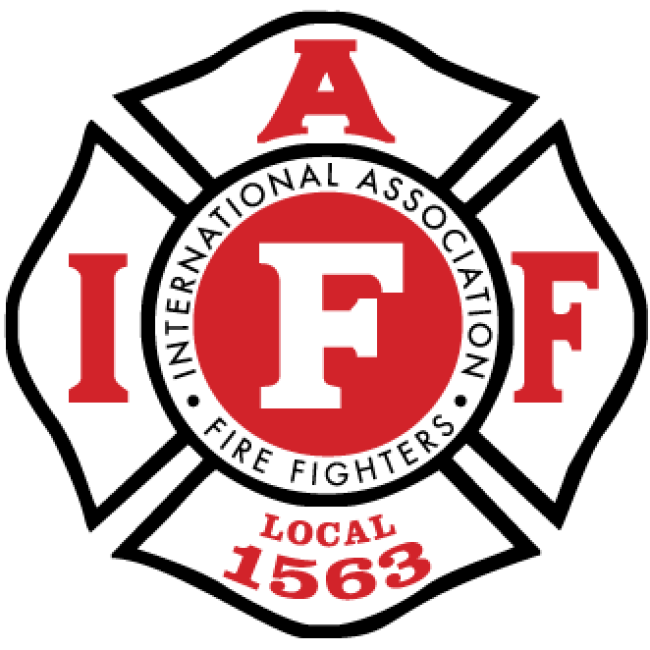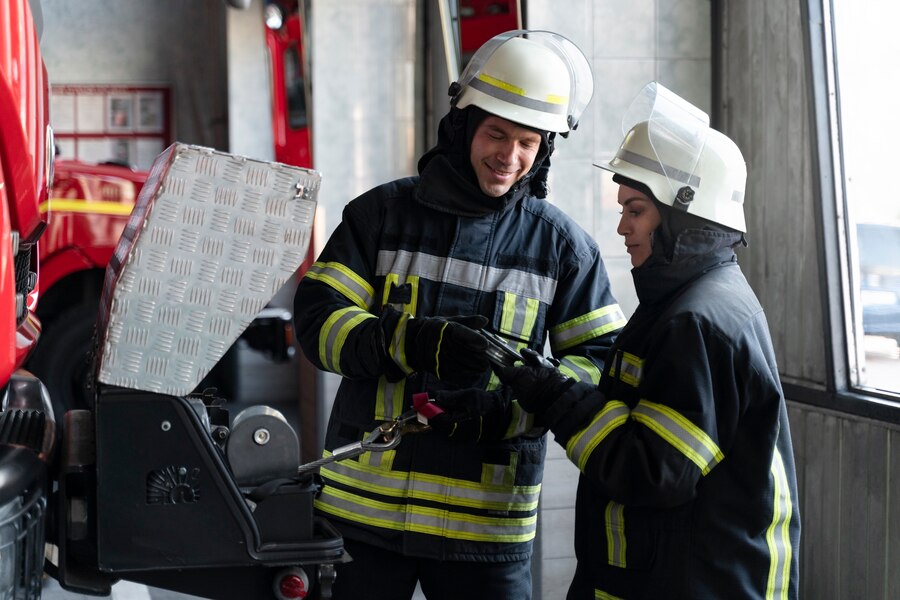Fire and rescue services are vital to maintaining the safety and well-being of communities worldwide. These dedicated teams work tirelessly to prevent, respond to, and mitigate the effects of fires, natural disasters, and other emergencies.
Fire and rescue services encompass many responsibilities, from extinguishing fires and rescuing individuals from hazardous situations to providing emergency medical care and educating the public on fire prevention and safety practices. Their constant vigilance and readiness ensure that communities can rely on swift and effective responses in times of crisis.
Fire and rescue services’ role is not limited to emergency response; they also engage in rigorous training, planning, and community outreach to build resilience and preparedness within the communities they serve. The commitment and expertise of fire and rescue services are fundamental to safeguarding lives and property daily.
Roles and Responsibilities of Fire and Rescue Services
Fire and rescue services are essential to community safety. They perform a wide range of duties that go beyond extinguishing fires.
- Firefighting and Suppression involve responding quickly to extinguish fires, preventing their spread, and minimizing damage to properties and lives.
- Search and Rescue Operations involve conducting rescue missions during emergencies such as building collapses, vehicle accidents, and natural disasters to save lives.
- Emergency Medical Services: Providing immediate medical care and first aid to individuals affected by emergencies before additional medical help arrives.
- Fire Prevention and Education: Educating the public on fire safety practices, conducting fire safety inspections, and promoting awareness to prevent fires.
- Coordination with Other Emergency Services: Working alongside police, medical teams, and other agencies to ensure a coordinated and effective response during crises.
Fire and rescue services play a crucial role in maintaining public safety through their extensive responsibilities.
Training and Qualifications for Fire and Rescue Personnel
The training and qualifications required for fire and rescue personnel are rigorous and comprehensive, reflecting the demanding nature of their work. Prospective firefighters must undergo extensive training programs that include theoretical and practical components.
This training covers a wide range of topics, such as fire science, emergency medical procedures, hazardous materials handling, and rescue techniques. Physical fitness is also critical, with candidates required to pass demanding fitness tests to ensure they can perform the physically challenging tasks associated with firefighting and rescue operations.
Continuing education is essential, as fire and rescue personnel must stay updated on the latest techniques, equipment, and safety protocols. Advanced certifications in specialized areas, such as technical rescue or fire investigation, further enhance their qualifications. This continuous training ensures that fire and rescue personnel are always prepared to respond effectively to any emergency, maintaining high standards of safety and proficiency.
Fire and Rescue Equipment and Technology
Fire and rescue equipment and technology are essential components that significantly enhance the effectiveness and safety of emergency response operations.
- Protective Gear: Includes helmets, gloves, boots, and fire-resistant suits designed to protect firefighters from extreme heat and hazardous materials.
- Thermal Imaging Cameras: Allow firefighters to see through smoke and locate victims or hotspots in fire environments.
- Drones: Provide aerial views of incidents, assist in assessing the scale of emergencies, and help with search and rescue operations.
- Firefighting Robots: Equipped to handle dangerous tasks such as entering hazardous environments and extinguishing fires remotely.
- Advanced Communication Systems: Ensure real-time coordination and information sharing among team members and other emergency services.
By continually upgrading their equipment and embracing technological advancements, fire, and rescue services enhance their ability to respond effectively to various emergencies, ensuring excellent safety for responders and the community.
Emergency Response Protocols
Emergency response protocols are the structured procedures that fire and rescue services follow to ensure a swift, organized, and effective response to various emergencies. These protocols are designed to standardize the actions taken during fires, medical emergencies, natural disasters, and hazardous material spills.
Critical components of these protocols include initial assessment, incident command, communication, and resource management. The incident command system (ICS) is a critical element, providing a clear hierarchy and defined roles to ensure coordinated efforts among responders. Communication strategies, including radios and centralized dispatch systems, facilitate real-time information sharing and decision-making.
Resource management strategically deploys personnel, equipment, and other assets to optimize response effectiveness. Regular training and drills ensure that all personnel are familiar with these protocols and can execute them proficiently under pressure, ultimately enhancing the safety and outcomes of emergency situations.
Fire Prevention and Safety Education
Fire prevention and safety education are crucial in reducing the risk of fires and ensuring that communities are prepared to respond effectively in emergencies.
- Public Awareness Campaigns: Utilizing various media platforms to disseminate information on fire risks and prevention tips.
- School Programs: Implementing educational initiatives to teach children about fire safety and emergency procedures.
- Home Inspections: Conduct safety inspections and offer guidance on fire risk reduction and code compliance.
- Community Events: Hosting open houses, safety demonstrations, and workshops to engage residents and provide hands-on learning.
- Smoke Detector Programs include installing and maintaining smoke detectors in homes and educating residents on their importance and proper use.
By staying informed and participating in fire prevention and safety education, you can contribute significantly to your community’s well-being.
Challenges Faced by Fire and Rescue Services
Fire and rescue services face various challenges that impact their ability to protect and serve communities effectively.
- Funding and Resource Allocation: Limited budgets can restrict the acquisition and maintenance of essential equipment and affect staffing levels.
- Increasing Frequency of Disasters: Rising occurrences of natural disasters such as wildfires and floods strain resources and response capabilities.
- Occupational Hazards: Firefighters face risks from exposure to toxic substances and the physical demands of their work, which can impact their health and safety.
- Training and Retention: Ensuring ongoing training and retaining skilled personnel are ongoing challenges, especially in underserved areas.
- Balancing Duties: Fire and rescue services must balance emergency response, fire prevention, and public education, often with limited resources.
Understanding and addressing these challenges is vital for supporting the effectiveness and well-being of fire and rescue services.
Community Engagement and Volunteer Programs
Community engagement and volunteer programs are vital aspects of fire and rescue services, enhancing their capacity to serve and protect the public. These programs foster strong relationships between fire services and the communities they serve, promoting a culture of safety and preparedness. Volunteer firefighters are crucial, particularly in rural and under-resourced areas, providing essential support in emergency response and community outreach efforts.
These volunteers undergo rigorous training to ensure they meet the same standards as professional firefighters, enabling them to assist in various operations effectively. Community engagement initiatives include public safety education, participation in local events, and collaboration with community organizations to address specific safety concerns.
Fire and rescue services also encourage community involvement through programs like CERT (Community Emergency Response Team), which trains residents in basic disaster response skills. By actively involving the community and leveraging volunteer resources, fire, and rescue services enhance operational effectiveness and foster a resilient, well-informed populace.
Global Perspectives on Fire and Rescue Services
Fire and rescue services worldwide operate under varied systems but share the common goal of safeguarding lives, property, and the environment. While many countries have highly professionalized services with advanced training and equipment, some regions depend on volunteers and face resource limitations.
Global cooperation, facilitated by organizations like the IAFC and UNDRR, is crucial during significant disasters, providing essential cross-border support. The impact of climate change, urbanization, and technological advancements drives ongoing adaptation and innovation in fire and rescue operations to effectively meet emerging challenges.
Future Trends in Fire and Rescue Services
The future of fire and rescue services is rapidly evolving, driven by technological advancements and innovative practices that enhance operational efficiency and safety.
- Artificial Intelligence and Data Analytics: AI and machine learning predict fire risks and optimize resource allocation, improving response times and strategic planning.
- Robotics and Drones: These technologies assist in search and rescue operations, hazardous material handling, and aerial surveillance, reducing risks to human firefighters.
- Sustainability Practices: Adopting eco-friendly equipment and practices aims to minimize environmental impact and promote sustainability in fire and rescue operations.
- Smart City Integration: Advanced communication systems and sensors are being integrated into urban infrastructure, enhancing fire detection and emergency response capabilities.
- Enhanced Training Simulations: Virtual reality and other advanced simulation tools provide more realistic training scenarios for firefighters, improving preparedness for complex emergencies.
As we look to the future, these trends will significantly influence how fire and rescue services operate, ensuring they remain effective in safeguarding communities and adapting to new challenges.
Through extensive roles and responsibilities, fire and rescue services are indispensable to ensuring community safety. From extinguishing fires and conducting rescue operations to educating the public on fire prevention, these services are integral to maintaining public safety and preparedness.
The Anne Arundel County Professional Firefighters Local 1563 exemplifies this commitment to community well-being. If you have any questions or need assistance, please get in touch with them at 410-987-1180. Join us in supporting our local firefighters and their invaluable contributions to our safety and security. Your involvement and awareness can significantly impact our community’s resilience.

